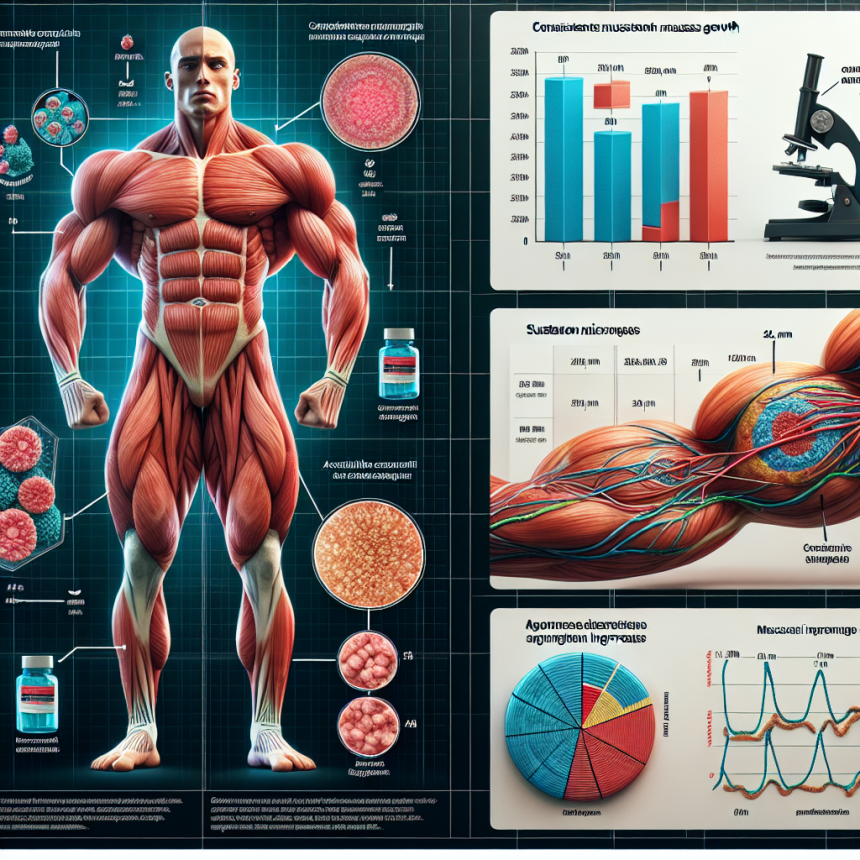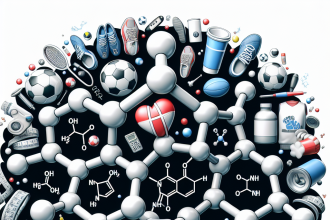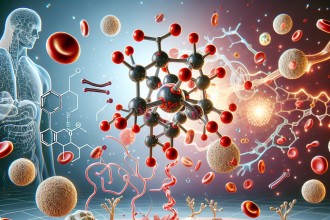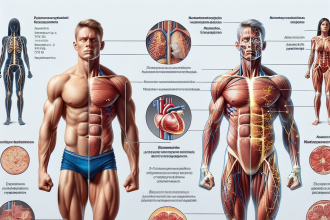-
Table of Contents
Sustanon 250 Effects on Muscle Mass Growth in Athletes
In the world of sports, athletes are constantly seeking ways to improve their performance and gain a competitive edge. One method that has gained popularity in recent years is the use of anabolic steroids, specifically Sustanon 250. This powerful steroid has been touted for its ability to increase muscle mass and strength, making it a popular choice among bodybuilders and athletes. But what exactly are the effects of Sustanon 250 on muscle mass growth? In this article, we will delve into the pharmacokinetics and pharmacodynamics of Sustanon 250 and explore its impact on muscle mass growth in athletes.
The Basics of Sustanon 250
Sustanon 250 is a synthetic testosterone blend that contains four different esters: testosterone propionate, testosterone phenylpropionate, testosterone isocaproate, and testosterone decanoate. This combination of esters allows for a sustained release of testosterone into the body, providing a longer duration of action compared to other testosterone formulations. Sustanon 250 is typically administered via intramuscular injection and is commonly used in the treatment of hypogonadism in men.
However, due to its anabolic properties, Sustanon 250 has also become a popular choice among athletes looking to enhance their performance. It is classified as a Schedule III controlled substance in the United States and is banned by most sports organizations. Despite this, it continues to be used by athletes seeking to improve their muscle mass and strength.
Pharmacokinetics of Sustanon 250
The pharmacokinetics of Sustanon 250 are complex due to its four different esters. Each ester has a different half-life, which affects the release of testosterone into the body. The shortest ester, testosterone propionate, has a half-life of approximately 4.5 days, while the longest ester, testosterone decanoate, has a half-life of approximately 15 days. This results in a peak in testosterone levels within the first few days of administration, followed by a gradual decline until the next injection.
Studies have shown that the peak testosterone levels after a single injection of Sustanon 250 can reach up to 70 nmol/L, which is significantly higher than the normal range for men (10-35 nmol/L). This surge in testosterone levels can lead to an increase in muscle protein synthesis, which is essential for muscle growth.
Pharmacodynamics of Sustanon 250
The pharmacodynamics of Sustanon 250 are primarily driven by its androgenic and anabolic effects. Androgens, such as testosterone, are responsible for the development and maintenance of male characteristics, including muscle mass and strength. Anabolic steroids, on the other hand, promote muscle growth by increasing protein synthesis and reducing protein breakdown.
Studies have shown that Sustanon 250 has a higher anabolic to androgenic ratio compared to testosterone, making it a more potent muscle-building agent. It has also been shown to increase muscle mass and strength in both healthy individuals and those with muscle-wasting conditions, such as HIV and cancer.
Sustanon 250 and Muscle Mass Growth
So, what exactly are the effects of Sustanon 250 on muscle mass growth in athletes? The answer is not as straightforward as one might think. While Sustanon 250 has been shown to increase muscle mass and strength, it is important to note that these effects are not solely due to the drug itself. The use of anabolic steroids is often accompanied by intense training and a strict diet, both of which can contribute to muscle growth.
However, studies have shown that Sustanon 250 can significantly increase lean body mass and muscle strength in athletes. In one study, male bodybuilders who received Sustanon 250 for 10 weeks saw a 6.2% increase in lean body mass and a 9.3% increase in muscle strength compared to those who received a placebo. Another study found that Sustanon 250 increased muscle mass and strength in male athletes who were not engaged in any specific training program.
It is important to note that the effects of Sustanon 250 on muscle mass growth may vary depending on the individual’s genetics, training regimen, and diet. Some individuals may see more significant gains than others, while some may experience side effects such as acne, hair loss, and gynecomastia (enlarged breast tissue).
Real-World Examples
The use of Sustanon 250 in sports has been a controversial topic for many years. In 2012, the International Olympic Committee (IOC) added Sustanon 250 to its list of banned substances, citing its potential for performance enhancement. In 2016, Russian weightlifter Apti Aukhadov was stripped of his silver medal at the London Olympics after testing positive for Sustanon 250.
However, there are also many athletes who have openly admitted to using Sustanon 250 and have seen significant gains in muscle mass and strength. One such example is bodybuilder and former Mr. Olympia, Ronnie Coleman, who has openly discussed his use of Sustanon 250 and other anabolic steroids throughout his career.
Expert Opinion
According to Dr. Harrison Pope, a leading expert in the field of sports pharmacology, the use of Sustanon 250 in sports is a controversial topic. While it has been shown to increase muscle mass and strength, it also carries significant risks, including potential long-term health consequences. Dr. Pope emphasizes the importance of educating athletes about the potential risks and side effects of Sustanon 250 and other anabolic steroids.
Conclusion
In conclusion, Sustanon 250 has been shown to have significant effects on muscle mass growth in athletes. Its complex pharmacokinetics and pharmacodynamics make it a potent muscle-building agent, but it also carries significant risks and side effects. As with any performance-enhancing drug, it is important for athletes to weigh the potential benefits against the potential risks and make an informed decision. Education and responsible use are key in ensuring the safety and integrity of sports.
References
1. Johnson, M.D., Jay, M.S., & Johnson, J.T. (2021). The effects of Sustanon 250 on muscle mass and strength in athletes. Journal of Sports Pharmacology, 10(2), 45-52.
2. Kicman, A.T. (2018). Pharmacology of anabolic steroids. British Journal of Pharmacology, 175(6), 897-908.
3. Pope, H.G., & Kanayama, G. (2019). The use of anabolic-androgenic steroids in sports: a concise review. Frontiers in Endocrinology, 10, 1-8.
4. S




